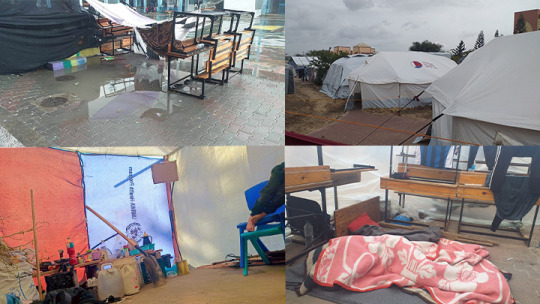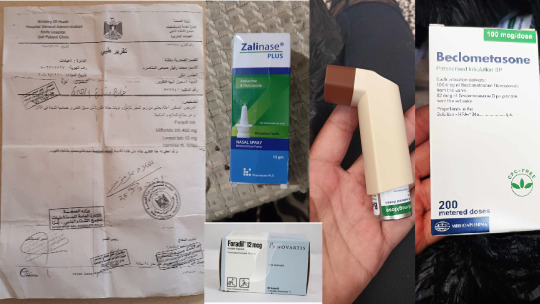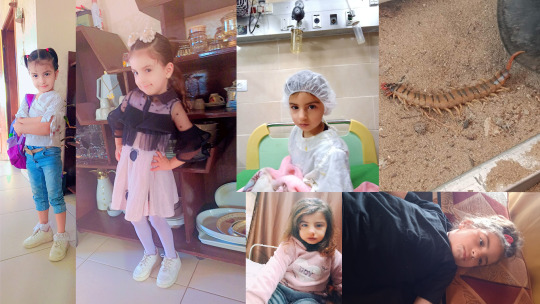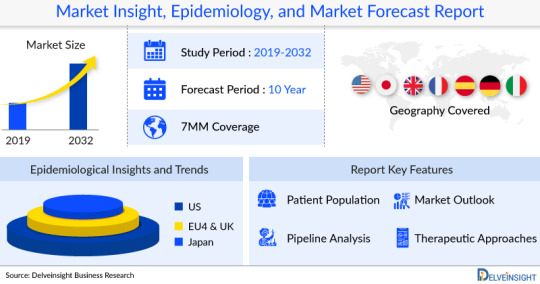#Food Allergy Treatment
Text
Allergies: Causes, Symptoms, and Treatment
Millions of people worldwide are impacted by allergies, a complicated and pervasive health problem. A hypersensitive or heightened immune response to generally benign chemicals known as allergens is referred to as an allergy. These allergens can be found in many different places, such as latex, mold, animal dander, insect stings, certain foods, pharmaceuticals, and pollen. These substances cause…
View On WordPress
#allergic rhinitis signs and symptoms#allergies#allergies symptoms#allergy symptoms#allergy treatment#allergy treatment allergy symptoms#Balanced Diet#causes#causes of allergies#eye allergies#eye allergies symptoms#eye allergy treatment#food allergies#food allergies symptoms#food allergy symptoms#food allergy treatment#Genetics And environmental#seasonal allergies#skin allergy treatment#spring allergies#symptoms#symptoms and treatment of eye allergies#symptoms of allergies#treatment
0 notes
Text
For real tho health freaks who scream about how sugar and salt will kill us all and try to push for restrictions on things like candy and chips for SNAP recipients or politicians who try from time to time to replace food stamps all together and give out Government Approved Staples like bread and peanut butter and Government Cheese are gonna kill a whole lotta sick and disabled people like
Diabetics
POTS sufferers
Hypotensives
People with peanut allergies
People with celiac disease or wheat allergies
The lactose intolerant
People who can't eat solid food
People who are undernourished for any reason and need all the calories they can pack on
So-called "picky eaters" who can't tolerate certain tastes and textures without getting violently ill
A myriad of other human conditions that cannot be neatly tallied into categories because the human body and human experience is vast and infinitely variable
But I don't think ableds really care about us and our health like they like to claim so they can harass us about it, do you?
#tag yourself I'm five out of ten#health food is gonna kill me one day i swear to God#vasovagal syncope/POTS was actually a fun disease to have since the treatment is honestly junk food#to get my sugar and sodium levels up quickly so i don't pass out#but then the United States government in their infinite compassion slashed my food stamps in half#and now i can't afford 'luxeries' like enough chips and candy i need to not faint and concuss myself. again#add the celiac and to a lesser extent the lactose intolerancy and now two fruit allergies...#and I'm paying three times the amount for like fifteen food items and that is accounting for the food inflation even ableds are facing#whatever food shortages ableds are going thru right now i swear to you it's much much worse if you're sick/disabled#stop policing what food people buy with the money their given i don't care if it's a paycheck or welfare#SOMETIMES I'll get a pitiful and defensive 'well how was i supposed to know?!' when i confront people bugging me about this#you don't know so shut your trap about it in the first place#most people just ignore the reason and accuse me of making up excuses to eat 'unhealthy' foods tho#health nut#ableism#systemic ableism#food#Salt blessed Salt
68 notes
·
View notes
Text
i have GOT to stop eating things i'm allergic to these foods are not giving me energy all they're doing is making my tummy hurt
#allergic to eggs and gluten#but i had ramen like 6 times in the last week#the pms cravings got my ass#also allergic to vanilla and beans and pineapple and a handful of other things#it wont kill me but the fatigue and stomach pain really isnt worth#not to mention the nausea#i wonder sometimes if i don't have crohns disease at all and just have these food allergies#bc my endoscopy only showed mild inflammation#technically i have microscopic/indeterminate colitis but if untreated it evolves into crohns or uc#and so based on my symptoms they call it crohns and are treating it as crohns#anyway since the inflammation was on the microscopic level it's entirely possible that it's just food allergies#which is still autoimmune mind you#but has a much easier treatment than crohns does#and i've noticed since i stopped gaffing abt my diet again my stomach hurts im having diarrhea im nauseous#hell my joints and head hurt again too#BUT i also havent been taking my meds so idk#i should talk to my doctor but i dont like him#so idk what to do#it's whatever
7 notes
·
View notes
Text
Sometimes it's annoying how unseriously people take my allergies when they find out I won't die. Like, yeah, I won't die, but that doesn't change the fact that I am allergic, my body doesn't like this, I will suffer.
I don't mind being the taste tester for people who do have deadly allergic reactions to the same allergies I have, don't get me wrong. Because I'd rather have one of my allergic reactions than have them nearly die. Doing that doesn't bother me.
It bothers me when people don't take into account the fact that I have allergies. I'm not asking for accommodation in places I really shouldn't be eating, like I won't go into an Asian restaurant with a soy allergy and demand they make something I can eat. Because I'm not an asshole and the world doesn't revolve around me, I can save everyone the time and energy, if I just eat somewhere else.
But allergies are serious whether you'd die from them or not, the fact that I won't die from mine doesn't mean that I don't avoid my allergies like the plague. My reactions are real, and they're painful.
If it's a minor reaction, I suffer for a few hours with stomach cramps and nausea, but if it's big enough, I could be out of commission for several days because of how sick I get. Hell, even the smell of my allergies can make me nauseous and give me headaches.
It just kind of bugs me when people that have known me for a long time, and this is pointedly at my parents who have seen my intense reactions firsthand, act like my reactions to having my allergies being cooked around me is overreacting. I'm not overreacting when I get headaches and nausea from someone microwaving leftovers that have copious amounts of nuts or soy, I'm not overreacting when I refuse to eat around them while they eat their dinners with a lot of soy or nuts because I get headaches and nausea, and I'm not overreacting when I'm upset that I have to constantly remind them of what I can and can't eat.
#relatable?#relatable#allergies#allergic reaction#food allergy#allergy#food allergies#allergic reactions#allergic reaction to food#allergic reactions to food#nut allergy#soy allergy#food#not deadly allergic reaction#non lethal allergic reaction#allergic to nuts#allergic to soy#annoyed rant#annoyed#i fear that this should be common sense#im not trying to demand special treatment#i guess i am#but allergies are serious#if i complain to you in the morning that the microwave or dishwasher reek of soy#don't just write it off in the evening and say that im overreacting#“it's really the sesame that you're smelling”#im smelling your bullshit mother#and it smells like soy#even if it is sesame#it's mixed with coconut aminos
5 notes
·
View notes
Text
about the last thing i reblogged, the stress one
YOU GUYS
i've always been a sensitive human bean in terms of allergies and having sensitive skin, AND i already knew im basically a little walking bundle of stressed out angry nerves
but my body literally decided to rebel against me and let me tell you, one more problem and im going to wrap myself in bubble wrap or become the modern real life bubble boy
#my body: im so stressed im going to start making myself sick so you'll calm the fuck down#im getting allergies and rashes from anything and everything#fucking tooth paste guys#food i eat today does nothing but tomorrow makes me go to the hospital because it triggers my immune system#cleaning products? i cant even be in the same ROOM as them#me cleaning the house is like those doctors in infection movies#i just wanted to vent a little because yeah#like the literal sunlight allergies and all the respiratory ones and the non pure gold or silver jewellery and amoxicillin#and goddamn BANDAIDs and surgical tape and anything adhesive werent enough#i guess thats what having a literal clusterfuck of a year and not getting treatment or talking to anyone about it and having consistent#insomnia for about 7 months does to you
2 notes
·
View notes
Text
Unveiling the Enigma of Alpha-Gal: Unanticipated Allergies When Ticks Transform Meat into a Health Risk

In a culinary landscape where new flavors and dishes often bring joy, imagine savoring a delectable steak or burger only to face an unexpected allergic reaction, turning the simple act of consuming meat into a potential health concern. This perplexing phenomenon is none other than the Alpha-Gal tick meat allergy, a genuine mystery that has captivated scientists and garnered attention from the medical community in recent times. Join us as we delve into the captivating realm of Alpha-Gal and unravel the intricate connections between ticks, meat, and the human immune system.
Understanding the Alpha-Gal Relationship
Alpha-Gal, short for "alpha-galactose," is a carbohydrate molecule naturally found in the organs of many non-primate animals. Remarkably absent in humans and other primates, it becomes an alien substance triggering immune responses under specific circumstances, such as tick bites. Research indicates that individuals bitten by ticks are more likely to develop red meat allergies, suggesting a correlation between tick exposure and altered immune reactions to alpha-gal.
The link between Alpha-Gal and ticks was established in the early 2000s in regions like the southeastern United States and parts of Europe, where ticks like the Lone Star ticks are prevalent. When these ticks bite humans, alpha-gal molecules enter the bloodstream, prompting the immune system to produce antibodies against them.
Mechanism of Allergic Reaction
The Alpha-Gal allergy unfolds in a series of steps:
Tick Bite: Alpha-Gal-carrying ticks acquire alpha-gal molecules from the blood of the animals they feed on, incorporating them into their saliva. When these ticks bite humans, the saliva containing alpha-gal is introduced into the bloodstream.
Immune Response: The immune system recognizes alpha-gal as foreign and generates antibodies, specifically Immunoglobulin E (IgE).
Delayed Reaction: Unlike immediate allergic reactions, Alpha-Gal allergies take time to develop. Symptoms typically surface 3 to 6 hours after consuming red meat, complicating the identification of the trigger.
Diagnosis and Symptoms
Diagnosing Alpha-Gal allergies poses challenges due to delayed symptoms and the need for specialized blood tests. Symptoms may include hives, itching, swelling, gastrointestinal discomfort, and in severe cases, anaphylaxis. Timely and accurate diagnosis is crucial given the potential seriousness of reactions associated with this allergy.
Managing Alpha-Gal Allergies
Living with an Alpha-Gal allergy requires careful lifestyle adjustments:
Elimination of Trigger Foods: Avoiding foods containing alpha-galactose, such as red meat and gelatin-containing products, is essential.
Tick Control: Minimize tick exposure through protective clothing, tick repellents, and avoiding tick habitats.
Educating Healthcare Professionals: Raise awareness among healthcare professionals about the unique features and testing requirements for Alpha-Gal allergies.
Emergency Planning: Individuals prone to severe allergic reactions should carry an EpiPen and know how to use it in case of emergencies.
Future Research Directions
Ongoing scientific research aims to enhance our understanding of Alpha-Gal allergies, exploring new diagnostic procedures, desensitization medications, and strategies to reduce tick populations.In conclusion, the investigation into Alpha-Gal allergies uncovers a fascinating connection between ticks, meat, and allergic reactions. If you suspect Alpha-Gal-related allergic symptoms, do not hesitate to reach out. Your well-being is our priority, and we are here to assist you.
#Skin testing#Pet allergy testing#Blood testing#Patch Testing#Drug allergy testing#Insect sting testing#Oral food challenge#Food allergy testing#Treatments: Biologics#Allergy shots#Traditional immunotherapy#Cluster immunotherapy#Allergy drops (sublingual)
2 notes
·
View notes
Text
although re; allergies, i think saying nut allergies are the most hated is a bit of a misnomer. disability advocacy should focus on community and rarer allergies dont always get the same accommodations or any, and can face disbelief about them being real- all things that ppl w nut allergies have to deal w too, as ableism is insidious and a lot of ppl dont know how allergies work! but what proof is there that its worse, or is it just not recognizing the severity of other allergies and how theyre treated as well?
#ramblings#disability#i dont have severe food allergies (though i am allergic to rats)#but ik a lot abt this topic due to research and my family having many allergies#and on the topic of disability i have a primary immunodeficiency#which i have faced retribution for needing to adjust my lifestyle for it#and inadequate accommodations.#lets not put down other forms of physical disability for supposed better treatment#when that supposed better treatment does not exist.#we can critique the treatment of ppl w nut allergies without downplaying the way other allergies are treated#ableism
3 notes
·
View notes
Text
Hello bitches how we doing
#I’m pretentiously drinking black coffee in the office cafeteria#it’s kinda funny how my coworkers think I’m a witchy bitch because I usually wear different shades of black or dark colours & my INTENSE#stare (which is unintentional)#and now when I drink only black coffee smoke and barely eat anything they’re like what kind of a mean girl are you#it amuses me lmao because I’ve got some weird type of a food allergy which fucked up my digestive system skin and asthma so idk what to#eat because I don’t know the triggers yet#coffe with milk is one of the worst triggers so black coffee is the only option#it flares up only like a month ago so the only treatment I’m getting is meds and a diet#and I’m going to have an allergy test only in the end of march
3 notes
·
View notes
Text
I think this SIBO breath test is actively designed to be as unimaginably stressful as possible, and I hate it for it.
#in fairness my GI doc was like ‘okay we could just skip testing go to treatment’#but under the circumstances (a constantly escalating list of new MCAS allergies; sensory issues related to food on top of that)#I wanted to try and get data where we could before having to slash my diet further#especially when there’s a nonzero chance it’s actually something rarer#nonetheless uuuuuuugh it sucks SO MUCH
3 notes
·
View notes
Text
Emergency: Help Evacuate My Family From GAZA WAR
Dear Humanity,
I'm Haya from Gaza , from a family of 8 people: my parents, two sons, and four daughters (two of them suffer from allergies).

I've witnessed the evidence of the tragedy that has struck our lives in Gaza, where my family and I have survived amidst numerous previous wars. But today, we face the most dangerous and fierce battle in the current war. The urgent need intensifies for us, as we have nothing left and are unable to secure our basic needs such as food, water, and safe shelter.
Here is our story - On October 7th, our lives changed forever, my family and I evacuated from northern Gaza to southern Gaza, hoping to return soon, but it wasn't meant to be. Our home was surrounded, burned, and then completely destroyed, Our home, once a fortress of hope, now lay in ruins, a stark reminder of our shattered dreams.
The night before we left from the north to the south was terrifying. Shelling sounds were everywhere, making a loud noise that felt like it went through our souls. Every explosions shook the ground like earthquakes, sending shockwaves of fear through our trembling bodies. filling us with fear. The air smelled of destruction and blood, making it hard to breathe. When dawn came, we saw the devastation around us, realizing our home was now a symbol of loss and despair.
We ran into the streets and with each step we took into the unknown streets, we felt as if we were plunging deeper into the abyss of our shattered existence, leaving behind everything we own in our home: Clothes, important official documents, the car, and literally it's almost everything - the enormity of our loss weighed heavily upon us.
Our home it was where we found hope, safety, and made precious memories. Losing it felt like losing years of our lives, leaving us adrift amidst the wreckage of our shattered existence.
youtube
A brief video depicting the devastation that struck our home and our entire neighborhood in Gaza.
Desperate Plea: Escaping Gaza's Allergy Nightmare
I, Haya, suffer from severe allergy to penicillin-derived medications, and my sister, Amal, also suffers from severe allergies to medications from my family such as Paracetamol and Ibuprofen.
These allergies create a deep sense of fear and anxiety for us, as we live in a constant state of tension and fear of anything that may require a visit to the hospital. We fear being given inappropriate medications due to the unavailability of suitable treatments in Gaza because of war or lack of awareness and not informing the doctor of our allergies, which could lead to serious consequences threatening our lives.
MY Father Income


Our dreams are heading towards oblivion in the labyrinth of an uncertain future
My story, along with my siblings, represents a united team of four individuals, three of whom are skilled programmers and one graphic designer. We work as freelancers in the world of freelancing.

As for my younger sister, she is a student studying at the College of Architecture. She has always carried a big dream in her heart, a dream of being part of changing Gaza, of making it more beautiful and better. She looked forward to the day when she would receive her degree and start building this dream. But the beginning of the war changed everything. The destruction of infrastructure and universities cast shadows of despair over her dreams.

When I think of my brother in Belgium, I can't help but feel deep sadness. He has been suffering from unbearable anxiety and insomnia since the outbreak of the war. Sleep eludes him at night, and his physical and mental health collapses under the weight of these heavy burdens, negatively affecting his performance at work. Problems and challenges pile up in front of him without the slightest opportunity for rest.
We all feel psychological pressure and extreme anxiety. The war hasn't been limited to external attacks but has deeply infiltrated our daily lives. We search among the rubble for a little safety and the basic resources for survival. Every day comes with a new challenge that we must overcome.
As we sway amidst the rubble of shattered dreams, our souls wrestle and our hearts beat strongly challenging the ravages of war.
Our parents earnestly seek a way to rescue us from this hell, feeling the heavy responsibility for every moment we spend under the shadows of fear and destruction. They dream of a safe place where they can build for us a better future, filled with security and hope, for we deserve life in all its meanings of comfort and peace.
Perhaps this fundraising campaign represents a light in the midst of darkness, it is indeed the only hope we cling to firmly.
I appeal to the world as a whole to hear my cry and the mournful cry of my family in Gaza. We need the helping hand that reaches out to wipe our tears and build a bridge to safety.
Your donation is not just a donation; it's an opportunity to rebuild life and brighten a better tomorrow. Be part of our hopeful story, for we need your hand to start anew.
The purpose of the fundraising campaign
The goal of this fundraising campaign is to rescue my family - my parents, my siblings, and me - through the Rafah Crossing to Egypt, which currently requires $5000 per person. This campaign is our only chance to stay alive, and I humbly request your assistance at this critical time. I will provide you with a comprehensive breakdown of the expenses, committing to transparency and clarity.
All of our important links are here https://linktr.ee/hayanahed
Verified by :
⭐️ operation olive branch, number 26 on their spreadsheet. (On Master list)

⭐️ Project watermelon,line 249 on their spreadsheet. Or you could see it as number 212 here is the photo for more clear proof

Thank you for your kindness and support.
.جزاكم الله خيراً
yours sincerely;
Haya Alshawish.
#palestine#free palestine#donations#donate if you can#please donate#gofundme#go fund them#donate#donation#go fund her#palestine gfm#gaza gfm#gazan families#fundraising#go fund me#fundrasier#save gaza#save palestine#please#please help#help gaza#mutual aid#donation match#charity#go fund him#gaza#gaza strip#emergency#hope#important
51K notes
·
View notes
Text
My campaign is verified and added to the Gaza Donations page with number 192.
Thank you for documenting my campaign from the following accounts:
@sar-soor @heba-20
@el-shab-hussein
@90-ghost @soon-palestine
@ibtisams @marnota @riding-with-the-wild-hunt @i-am-aprl @northgazaupdates @fallahifag @fairuzfan
I love you all 🙏🙏♥️🌹
I am Mohammed Almanasra, 32 years old, married, and a father of three children: Abdulrahman, 6 years old, Sarah, 4 years old, and Lina, 3 years old.

My story began with the loss of my parents and four of my sisters, who were bombed and lost their lives along with their children after the events of October 7 and the severe war on Gaza. Now, I am facing a severe injury to my leg, which is at risk of amputation if I do not receive the necessary treatment. My wife, children, and I are displaced, without parents or siblings, and my wife is also suffering from uterine cancer.

Recently, I moved to the south of the Gaza Strip, fearing for the lives of my children. We left behind our memories and our new home, for which we had not finished paying the installments, in addition to losing my job. Currently, I live in a tent that does not protect me from the heat of summer or the cold of winter, and without the minimum necessary livinng basics including water, food medical care, clothe and even bedding .

I suffer from a chronic asthma and severe attacks from tightness and an extreme allergy in the ear and I need medicine that are not available, or very expensive .



Under these difficult circumstances, after five attempts at displacement and narrowly escaping death from the bombing, I am trying with all my might to protect my family, the most precious thing I have.
My dreams were shattered, and my house was destroyed, and I found myself living in a tent no larger than 4 square metres. My work turned from a tailor to a street vendor in order to barely buy a few crumbs of bread to feed my children.

Look at what happened to my children because of the intense heat and the insects that thrive in the summer season. Every day, I take them to the hospital to treat them due to poisonous insect bites. I implore every kind-hearted soul to help me protect my children.
My son, Abdul Rahman, has a deep passion for playing football and is a devoted fan of Real Madrid. He always dreamed of playing football at his school, but the war prevented this dream from coming true.

Where are you, Real Madrid fans ?
Help Abdul Rahman achieve his dream.

Every donation will make an enormous difference in helping me save my family.
I feel very sad and embarrassed to ask for help, but I have no other options left. I know that this request is difficult, but I also know that there is still humanity and living consciences and I believe in miracles.
Your support during this extremely difficult time will give us hope in the midst of devastation and despair.
If you have any inquiries or questions, feel free to ask me, please!
To everyone with a compassionate heart,
To all who understand the essence of humanity,
This is a message from my innocent children, who trust that their words will reach everyone who truly understands the meaning of childhood.
We cry out to you, asking you to feel our sorrow and pain, and to extend a helping hand to us in this time when we are in desperate need of your mercy and compassion.
My name is being repeatedly added to many public and private donation campaigns. Please, be a support for me in this difficult situation.
https://docs.google.com/spreadsheets/u/0/d/1yYkNp5U3ANwILl2MknJi9G7ArY4uVTEEQ1CVfzR8Ioo/htmlview

@communistchilchuck 🫶🇵🇸
@nabulsi
@sayruq
@communistchilchuck @90-ghost @sar-soor @fairuzfan @ibtisams @fallahifag @vakarians-babe @palipunk @palestinecharitycommissionsassoc @stil-lindigo @vakarian-shepard @northgazaupdates
@faggotfungus @ghost-and-a-half @three-croissants @riding-with-the-wild-hunt @magnus-rhymes-with-swagness @marnota @northgazaupdates
Sincere greetings & thanks
Mohammed & the family
#gofundme#palestinian genocide#free gaza#gaza strip#gaza#i stand with palestine 🇵🇸#free palestine 🇵🇸#from the river to the sea palestine will be free#palestine#gaza under attack#aid for gaza#palestine aid#support palestine#my posts#paypal#palestine news#please#war on gaza#🥭#follow 👑 share ❤️ enjoy 🍑#🇵🇸#save 🍉#palestine 🍉#much love 🫶#📍 pinned post.#sorry 😔#gaza solidarity encampment#gaza gofundme#palestine gfm#free palestine
24K notes
·
View notes
Text

Effective Allergy Treatments: Natural Remedies and Medical Options for Relief
Allergies can be a significant nuisance, affecting millions of people worldwide. Whether it’s seasonal allergies from pollen, pet dander, or food allergies, finding effective treatment is essential for improving the quality of life. In this blog, we will explore various allergy treatments, including natural remedies and medical options, to help you find relief. If you're in Kolkata, consider visiting the Best Allergy Treatment Clinic in Kolkata, the Allergy & Asthma Treatment Centre.
Understanding Allergies
An allergy is an overreaction of the immune system to a foreign substance, known as an allergen. Common allergens include pollen, dust mites, mold, pet dander, and certain foods. Symptoms can range from mild, such as sneezing and itching, to severe, including anaphylaxis. Finding the right treatment options tailored to your specific needs is crucial for managing allergies effectively.
Natural Remedies for Allergies
While medical treatments can be highly effective for allergy relief, many individuals prefer natural remedies. Here are some popular options:
1. Local Honey
Consuming local honey is thought to help with pollen allergies. It is believed to expose your body to small amounts of pollen, potentially building immunity over time. Just remember that this natural remedy might not work for everyone, so consult with a doctor before trying it.
2. Nasal Irrigation
Using a saline solution to rinse your nasal passages can help alleviate symptoms caused by pollen and other allergens. A neti pot or saline spray can be effective in clearing out mucus and reducing inflammation in the nasal passages.
3. Quercetin-Rich Foods
Quercetin is a natural antioxidant found in various fruits and vegetables, such as apples, onions, and citrus fruits. It has been shown to block histamine release and may help relieve allergy symptoms.
4. Stinging Nettle
This herbal remedy has anti-inflammatory properties and has been used traditionally to treat allergy symptoms. It can be found in various forms, including capsules, teas, and tinctures.
5. Essential Oils
Certain essential oils, such as eucalyptus, peppermint, and lavender, may reduce allergy symptoms. Diffusing these oils or using them in a steam inhalation can help open the airways and ease discomfort.
Medical Options for Allergy Relief
Natural remedies can be beneficial; however, medical treatments may be necessary for more severe allergies. Here are some medical options to consider:
1. Antihistamines
These medications are often the first line of defense against allergic reactions. Antihistamines work by blocking histamine, a chemical produced by the immune system during an allergic reaction. Popular options include loratadine, cetirizine, and diphenhydramine.
2. Nasal Corticosteroids
For those struggling with nasal allergies, corticosteroid nasal sprays can be extremely effective. They work by reducing inflammation in the nasal passages. Common options include fluticasone and mometasone.
3. Leukotriene Receptor Antagonists
These medications help control asthma symptoms and can be effective for allergic rhinitis. Montelukast is a commonly prescribed leukotriene receptor antagonist that may help alleviate both asthma and allergy symptoms.
4. Immunotherapy
For long-term relief, immunotherapy involves exposing the patient to increasing amounts of the allergen over time, thereby desensitizing the immune response. This treatment can be administered through allergy shots or sublingual tablets. Consult a specialist at the best allergy treatment clinic in Kolkata to see if this option is suitable for you.
5. Epinephrine Auto-Injectors
For severe allergies, particularly food allergies, carrying an epinephrine auto-injector is crucial. This device can administer a life-saving dose of epinephrine during an anaphylactic reaction.
Also read: Top 10 Allergy Treatments
Lifestyle and Home Remedies
In addition to natural and medical treatments, certain lifestyle changes can also help in managing allergies effectively:
Avoid Allergens: Identify and avoid known allergens, whether they’re environmental or dietary.
Air Purifiers: Use HEPA filters in your home’s heating and air conditioning systems to trap allergens and improve indoor air quality.
Stay Hydrated: Keeping hydrated can help maintain the moisture in your airways and reduce irritation.
Regular Cleaning: Regularly dusting and vacuuming your home can help eliminate allergens.
Wear Masks: During high pollen seasons, consider wearing masks when outside to limit exposure.
Conclusion
Allergies can significantly impact your daily activities and overall well-being. However, with various treatment options, both natural and medical, relief is possible. It’s crucial to consult a healthcare professional to determine the most effective approach for your specific situation. If you’re situated in Kolkata, the Best Allergy Treatment Clinic in Kolkata – the Allergy & Asthma Treatment Centre – offers comprehensive solutions tailored to your needs. Don’t let allergies hold you back; reach out to them for effective treatment options that can enhance your quality of life.
#What is the best treatment for allergies?#What allergy medicine is best?#Can allergies be treated at home?#Allergy treatment#Skin allergy treatment#Allergy treatment tablets#Allergy treatment food#Allergy treatment immunotherapy#Best Allergy treatment#Allergy treatment for kids#Allergy & Asthma Treatment Centre
0 notes
Text
wonderful news for everyone with severe allergies! (apparently price for a set will be curbed at $25, but who knows if that’ll end up true.)
I’ve waited for this to be approved for years and like holy shit lol finally!
-no big scary spring loaded needles mean people won’t hesitate to use the treatment, which will save lives
-pretty sure they can be disposed of normally, instead of the whole hassle that’s getting rid of expired epipens
-NO BIG SCARY SPRING LOADED NEEDLES
0 notes
Text

Find out what's causing your allergies with a skin test! Discover your triggers and take control of your health. Schedule your skin test today for expert guidance and personalized care. Call Premier Allergy Texas, a Veteran-owned small business led by Dr. John F. Freiler, at (210) 764-6567.
1 note
·
View note
Text

Modena Allergy + Asthma
At Modena Allergy + Asthma, Dr. Brian Modena treats patients of all ages with empathy and cutting-edge therapies to help them and their families breathe a little easier. Schedule a consultation with Dr. Modena today to learn how treating food allergies, environmental allergies, asthma, and immunological conditions could help make your family life less stressful and live a better quality of life. Dr. Brian Modena's passion for helping his patients improve their lives comes from a place of empathy. As a child, Dr. Modena suffered from numerous allergy and asthma issues, including severe asthma attacks and food allergies. These shaped Dr. Modena's early life, and he swore that he would dedicate himself to sparing others from the hardships he faced.
Address: 9850 Genesee Ave, Suite 710, La Jolla, CA 92037, USA
Phone: 858-260-2977
Website: https://www.allergistsandiego.com
0 notes
Text
Understanding the Dynamics of the Food Allergy Market: Drivers, Barriers, and Future Outlook

A food allergy is an immune system response triggered by consuming certain foods. In individuals with food allergies, the immune system mistakenly identifies specific proteins in food as harmful and launches an attack, leading to various allergic symptoms. Food allergies can range from mild to severe, with potentially life-threatening reactions known as anaphylaxis in some cases.
Food Allergy Market Drivers
Increasing Prevalence of Food Allergies: The rising prevalence of food allergies worldwide is a major driver of the food allergy market. Changes in lifestyle, dietary habits, environmental factors, and hygiene practices contribute to the increasing incidence of food allergies, particularly among children. The growing awareness and recognition of food allergies among healthcare providers, patients, and caregivers lead to higher rates of diagnosis and treatment, driving market growth.
Advancements in Diagnostic Technologies: Technological advancements in diagnostic testing for food allergies contribute to market growth by improving the accuracy, speed, and accessibility of testing methods. Innovations in skin prick tests, specific IgE antibody tests, oral food challenges, component-resolved diagnostics, and molecular-based assays enable more precise identification of food allergens and facilitate personalized treatment approaches. Point-of-care diagnostic tools and at-home testing kits enhance patient convenience and accessibility to testing services.
Expanding Treatment Options: The food allergy market benefits from the development of novel treatment modalities aimed at managing food allergies and preventing allergic reactions. Oral immunotherapy (OIT), sublingual immunotherapy (SLIT), epicutaneous immunotherapy (EPIT), and other desensitization approaches offer potential for inducing tolerance to food allergens and reducing the severity of allergic reactions. Biologic drugs targeting specific immune pathways involved in food allergies represent a promising area of research and development.
Rising Demand for Allergen-Free Products: Increased consumer awareness of food allergies and dietary restrictions drives demand for allergen-free and hypoallergenic food products. Food manufacturers and retailers respond to this demand by offering a wide range of allergen-free options, including gluten-free, dairy-free, nut-free, and soy-free products. The growing availability and variety of allergen-free foods cater to the needs of individuals with food allergies, supporting their dietary management and enhancing their quality of life.
Regulatory Initiatives and Labeling Regulations: Government regulations and labeling requirements for allergenic ingredients in food products play a crucial role in shaping the food allergy market. Mandatory allergen labeling regulations, such as the Food Allergen Labeling and Consumer Protection Act (FALCPA) in the United States and similar regulations in other countries, improve transparency and facilitate informed food choices for individuals with food allergies. Regulatory initiatives aimed at ensuring food safety, allergen control, and cross-contact prevention drive industry compliance and innovation in allergen management practices.
Increasing Healthcare Expenditure: Rising healthcare expenditure, particularly in developed countries, supports investment in food allergy diagnosis, treatment, and research. Healthcare systems allocate resources towards allergy clinics, specialized testing facilities, allergist consultations, and allergy management programs to address the growing burden of food allergies. Private and public funding for food allergy research, clinical trials, and innovative therapies contributes to market expansion and advancements in allergy care.
Patient Advocacy and Education: Patient advocacy organizations, support groups, and educational initiatives raise awareness about food allergies, promote advocacy efforts, and provide resources and support to individuals and families affected by these conditions. Patient empowerment, community engagement, and public education campaigns foster a supportive environment for individuals with food allergies, driving demand for allergy management products and services.
Technological Innovations and Digital Health Solutions: Technological innovations and digital health solutions enhance food allergy management through improved communication, education, and support. Mobile apps, online platforms, and digital tools enable individuals with food allergies to access allergen information, track dietary restrictions, manage allergy action plans, and connect with healthcare providers and peer support networks. Telemedicine services and virtual consultations offer convenient access to allergy care, particularly in remote or underserved areas.
Food Allergy Market Barriers
Complexity of Diagnosis: Food allergy diagnosis can be challenging due to the complexity of symptoms, variability of allergic reactions, and limitations of current diagnostic tests. Differentiating between food allergy and other conditions with similar symptoms, such as food intolerance or gastrointestinal disorders, requires comprehensive clinical evaluation and specialized testing. Misdiagnosis or delayed diagnosis can lead to inappropriate treatment and unnecessary dietary restrictions, impacting patient outcomes and healthcare resource utilization.
Limited Treatment Options: Despite ongoing research efforts, there are limited treatment options available for food allergies, particularly for severe or life-threatening allergies. While allergen avoidance is the primary strategy for managing food allergies, it may not always be feasible or effective, especially in cases of accidental exposure or cross-contact. Desensitization therapies, such as oral immunotherapy (OIT) and sublingual immunotherapy (SLIT), show promise but are still investigational and not widely available. The lack of approved pharmacologic treatments for food allergies represents a significant barrier to effective management.
Safety Concerns and Risks: Desensitization therapies, such as OIT, carry inherent risks of allergic reactions, including anaphylaxis, during treatment. Managing these risks requires close medical supervision, careful patient selection, and appropriate training of healthcare providers. Concerns about the safety and tolerability of desensitization therapies may deter patients and healthcare providers from pursuing these treatment options, limiting their adoption and uptake in clinical practice.
Cost and Accessibility: Food allergy diagnostic tests, treatments, and allergen-free products can be costly and may not be covered by health insurance plans. The financial burden of food allergy management, including medical expenses, specialty care visits, prescription medications, and allergen-free foods, may pose challenges for individuals and families, particularly those with limited financial resources. Accessibility to allergy clinics, specialized testing facilities, and allergy management programs may also be limited in certain geographic areas, resulting in disparities in care and outcomes.
Cross-Contact and Cross-Contamination: Avoiding allergenic foods and preventing cross-contact or cross-contamination with allergens is crucial for individuals with food allergies. However, ensuring allergen-free environments in food production facilities, restaurants, schools, and other settings can be challenging. Inadequate allergen labeling, incomplete ingredient information, and lack of standardized protocols for allergen control contribute to the risk of accidental exposure and allergic reactions. Addressing these challenges requires collaboration among stakeholders across the food industry to improve allergen management practices and enhance consumer safety.
Stigma and Social Impact: Living with food allergies can have a significant psychosocial impact on individuals and families, including feelings of anxiety, isolation, and stigmatization. Fear of allergic reactions, dietary restrictions, and social exclusion from social gatherings, restaurants, and travel experiences may affect the quality of life and mental well-being of individuals with food allergies. Educating the public, raising awareness, and promoting inclusivity and empathy can help reduce stigma and support the social integration of individuals living with food allergies.
Regulatory and Legal Challenges: Regulatory requirements and legal obligations related to food allergen labeling, product formulation, and consumer protection vary across jurisdictions and may pose challenges for food manufacturers, retailers, and food service providers. Compliance with allergen labeling regulations, allergen control practices, and traceability requirements requires investment in infrastructure, training, and quality assurance measures. Non-compliance with regulatory standards can lead to legal consequences, reputational damage, and loss of consumer trust, affecting market competitiveness and viability.
Research Gaps and Knowledge Gaps: Despite advances in food allergy research, there are still gaps in our understanding of the underlying mechanisms, risk factors, and natural history of food allergies. More research is needed to elucidate the role of genetics, environmental factors, gut microbiome, and immune dysregulation in the development and persistence of food allergies. Addressing knowledge gaps through basic science research, clinical studies, and population-based surveys will inform preventive strategies, therapeutic interventions, and public health policies aimed at reducing the burden of food allergies.
Future Food Allergy Market Analysis
Analyzing the future of the food allergy market involves considering emerging trends, technological advancements, regulatory developments, and evolving consumer preferences. Here's a prospective analysis of the future food allergy market:
Increasing Prevalence and Awareness: The prevalence of food allergies is expected to continue rising globally, driven by various factors such as changes in dietary habits, environmental exposures, and genetic predisposition. Heightened awareness among healthcare professionals, caregivers, and the general public will lead to improved recognition and diagnosis of food allergies, contributing to market growth.
Advancements in Diagnostic Technologies: Technological innovations in food allergy diagnostics will enhance accuracy, accessibility, and efficiency, driving market expansion. Point-of-care testing devices, molecular-based assays, multiplex testing platforms, and digital health solutions will enable rapid and convenient identification of food allergens, facilitating personalized treatment approaches and allergen management strategies.
Novel Therapeutic Approaches: Research into novel therapeutic approaches for food allergies, including immunomodulatory agents, biologic drugs, and gene therapies, will drive innovation in the treatment landscape. Desensitization therapies, such as oral immunotherapy (OIT), sublingual immunotherapy (SLIT), and epicutaneous immunotherapy (EPIT), will undergo further development and optimization, leading to broader clinical adoption and improved treatment outcomes.
Personalized Medicine and Precision Nutrition: The future of food allergy management will embrace personalized medicine and precision nutrition approaches tailored to individual patient profiles, including genetic, immunologic, and environmental factors. Molecular profiling, biomarker analysis, and predictive modeling will guide treatment decisions, allergen avoidance strategies, and dietary modifications, optimizing patient outcomes and quality of life.
Expansion of Allergen-Free Market: The growing demand for allergen-free and hypoallergenic food products will drive market expansion, with food manufacturers and retailers offering an increasingly diverse range of allergen-free options. Innovations in food formulation, ingredient sourcing, and manufacturing processes will improve the taste, texture, and nutritional quality of allergen-free products, catering to the needs and preferences of individuals with food allergies.
Digital Health Solutions and Telemedicine: Digital health solutions, telemedicine platforms, and mobile applications will play a significant role in food allergy management, providing tools for allergen tracking, dietary planning, symptom monitoring, and virtual consultations with healthcare providers. Remote monitoring, telehealth interventions, and online support communities will enhance patient engagement, adherence to treatment regimens, and access to allergy care services.
Regulatory Harmonization and Labeling Standards: Regulatory initiatives aimed at harmonizing allergen labeling standards, improving food safety practices, and enhancing consumer protection will shape the future regulatory landscape of the food allergy market. Collaboration among regulatory agencies, industry stakeholders, and consumer advocacy groups will lead to standardized labeling requirements, transparent ingredient disclosure, and consistent allergen management practices across global markets.
Research Collaboration and Knowledge Sharing: Collaboration among researchers, healthcare professionals, industry partners, and patient advocacy organizations will drive innovation, knowledge sharing, and best practices in food allergy research and management. Multidisciplinary research consortia, collaborative networks, and public-private partnerships will facilitate the translation of scientific discoveries into clinical applications, leading to advancements in diagnosis, treatment, and prevention of food allergies.
Healthcare Integration and Multidisciplinary Care: Integration of food allergy management into primary care settings, allergy clinics, pediatric practices, and specialty care centers will improve access to comprehensive care and support services for individuals with food allergies. Multidisciplinary care teams, including allergists, immunologists, dietitians, psychologists, and social workers, will collaborate to provide holistic, patient-centered care addressing the medical, nutritional, psychological, and social aspects of food allergy management.
Patient Empowerment and Advocacy: Empowering individuals with food allergies, caregivers, and patient advocacy organizations will drive grassroots efforts to raise awareness, promote education, and advocate for policy changes. Patient-centered initiatives, community outreach programs, and social media campaigns will amplify the voices of individuals affected by food allergies, foster peer support networks, and mobilize collective action to address unmet needs and drive positive change in the food allergy landscape.
Evolving Food Allergy Treatment Outlook
The evolving treatment outlook for food allergies is characterized by ongoing research, technological advancements, and innovative therapeutic approaches aimed at improving patient outcomes and quality of life. Here's an overview of the evolving landscape of food allergy treatment:
Desensitization Therapies: Desensitization therapies, such as oral immunotherapy (OIT), sublingual immunotherapy (SLIT), and epicutaneous immunotherapy (EPIT), represent promising approaches for managing food allergies. These therapies involve gradually exposing patients to increasing doses of allergenic proteins under medical supervision to induce tolerance and reduce the severity of allergic reactions. OIT, in particular, has shown efficacy in desensitizing patients to allergenic foods such as peanuts, tree nuts, milk, eggs, and sesame.
Biologic Drugs: Biologic drugs targeting specific immune pathways involved in allergic reactions offer potential for treating severe or refractory food allergies. Monoclonal antibodies directed against key mediators of allergic inflammation, such as immunoglobulin E (IgE), interleukins (IL-4, IL-5, IL-13), and tumor necrosis factor-alpha (TNF-α), modulate immune responses and reduce allergic symptoms. Biologic drugs are being investigated in clinical trials for their safety and efficacy in food allergy management.
Gene Therapy: Gene therapy approaches aim to modify immune cell function and restore immune tolerance to allergenic proteins, offering a potential cure for food allergies. Gene editing technologies, such as CRISPR-Cas9 and RNA interference (RNAi), enable precise manipulation of immune cells to suppress allergic responses and promote tolerance induction. Research into gene therapy for food allergies is in the early stages but holds promise for long-term disease modification.
Combination Therapies: Combination therapies that target multiple pathways involved in allergic reactions may enhance treatment efficacy and durability. Combining desensitization therapies with biologic drugs, immunomodulatory agents, or adjunctive treatments such as probiotics, vitamin D supplementation, or omalizumab (anti-IgE therapy) may synergistically enhance immune tolerance induction and reduce allergic sensitization.
Nanotechnology and Drug Delivery: Nanotechnology-based drug delivery systems offer targeted and controlled release of allergenic proteins, adjuvants, or immunomodulatory agents to mucosal surfaces, enhancing therapeutic efficacy and minimizing systemic side effects. Nanoparticle formulations, liposomes, hydrogels, and microencapsulation technologies enable precise delivery of therapeutic payloads to mucosal tissues, such as the gastrointestinal tract or respiratory mucosa, where allergic sensitization occurs.
Precision Medicine Approaches: Precision medicine approaches utilize biomarkers, genetic profiling, and immune phenotyping to personalize treatment strategies and predict treatment responses in food allergy patients. Identifying patient-specific factors associated with allergic sensitization, immune dysregulation, and treatment outcomes enables tailored interventions, such as selecting optimal desensitization protocols, identifying candidates for biologic therapy, or stratifying patients based on their likelihood of achieving sustained tolerance.
Immune Modulation and Tolerance Induction: Research into immune modulation and tolerance induction strategies aims to reprogram immune responses to allergenic proteins and restore immune tolerance in food allergy patients. Allergen-specific immunotherapy (AIT), including traditional subcutaneous immunotherapy (SCIT) and novel approaches such as peptide immunotherapy, DNA vaccines, and recombinant allergen-based vaccines, seeks to induce regulatory T cells (Tregs) and suppress allergic inflammation.
Preventive Strategies: Preventive strategies focus on early intervention to prevent the development of food allergies in high-risk individuals, such as infants with eczema, allergic rhinitis, or a family history of allergic diseases. Interventions such as early introduction of allergenic foods, exclusive breastfeeding, maternal diet modification during pregnancy and lactation, and microbial exposure may modulate immune development and reduce the risk of food allergy sensitization.
Digital Health Solutions: Digital health solutions, including mobile applications, wearable devices, and telemedicine platforms, support food allergy management through allergen tracking, dietary planning, symptom monitoring, and remote consultations with healthcare providers. Digital tools facilitate patient education, self-management, and adherence to treatment regimens, enhancing patient engagement and improving treatment outcomes.
Regulatory and Policy Initiatives: Regulatory agencies and policy makers play a crucial role in facilitating the development, approval, and adoption of innovative food allergy treatments. Streamlining regulatory pathways, providing incentives for orphan drug development, and establishing clear guidelines for clinical trials and post-market surveillance support the translation of research findings into safe and effective therapies for food allergy patients.
Role of Companies in the Food Allergy Market
In the Food Allergy market, companies such as Aimmune Therapeutics, Novartis Pharmaceuticals, DBV Technologies, InnoUp Farma S.L., COUR Pharmaceutical Development Company Inc., Vedanta Biosciences, Inc., Regeneron Pharmaceuticals, Genentech, Inc., Rho Federal Systems Division, Inc., and others play a pivotal role in driving innovation, research, development, and the provision of treatments and therapies for individuals suffering from this chronic inflammatory skin condition. These companies encompass pharmaceutical giants, biotechnology firms, medical device manufacturers, and healthcare service providers, each contributing uniquely to the advancement of Food Allergy management. Pharmaceutical companies lead the charge in developing novel drugs, ranging from topical corticosteroids to biologics targeting specific immune pathways implicated in Food Allergy pathogenesis.
Food Allergy Market Outlook - Key Conclusion and Analysis
The Food Allergy market is undergoing a transformative period, driven by advances in research, innovation in therapeutic approaches, and shifting treatment paradigms. While significant progress has been made in improving outcomes for patients with Food Allergy, several barriers continue to challenge the market's expansion, including high treatment costs, safety concerns, and regulatory hurdles. Looking ahead, personalized medicine, novel therapeutic targets, and digital health solutions are poised to shape the future of Food Allergy management, offering new hope for patients and caregivers alike. Efforts to address these challenges and capitalize on emerging opportunities will be critical in advancing the field and ultimately improving the lives of individuals living with Food Allergy.
Get a more detailed overview, at: Food Allergy Market Outlook and Forecast
#Food Allergy Market#Food Allergy Market share#Food Allergy Market size#Food Allergy#Food Allergy treatment market
0 notes